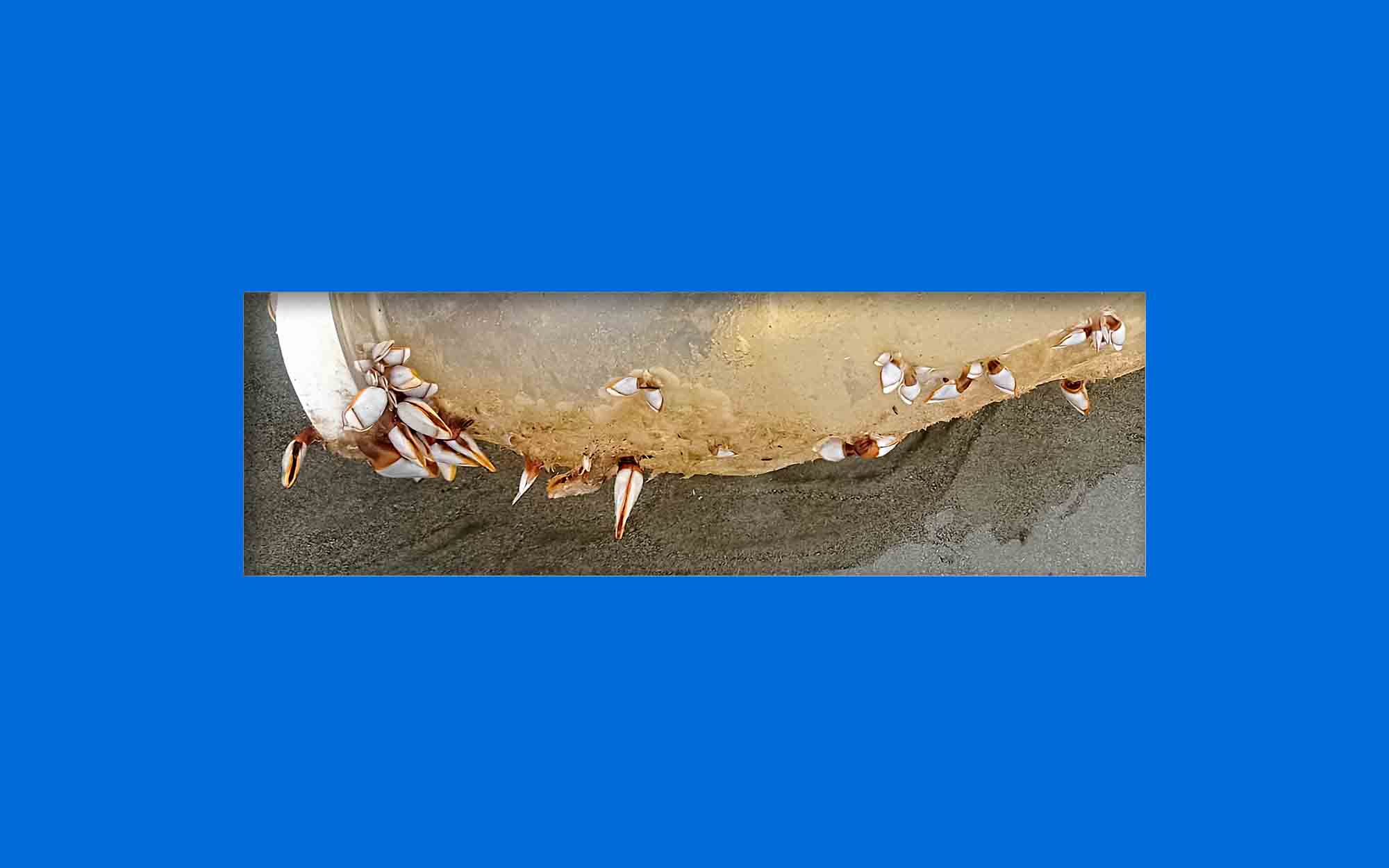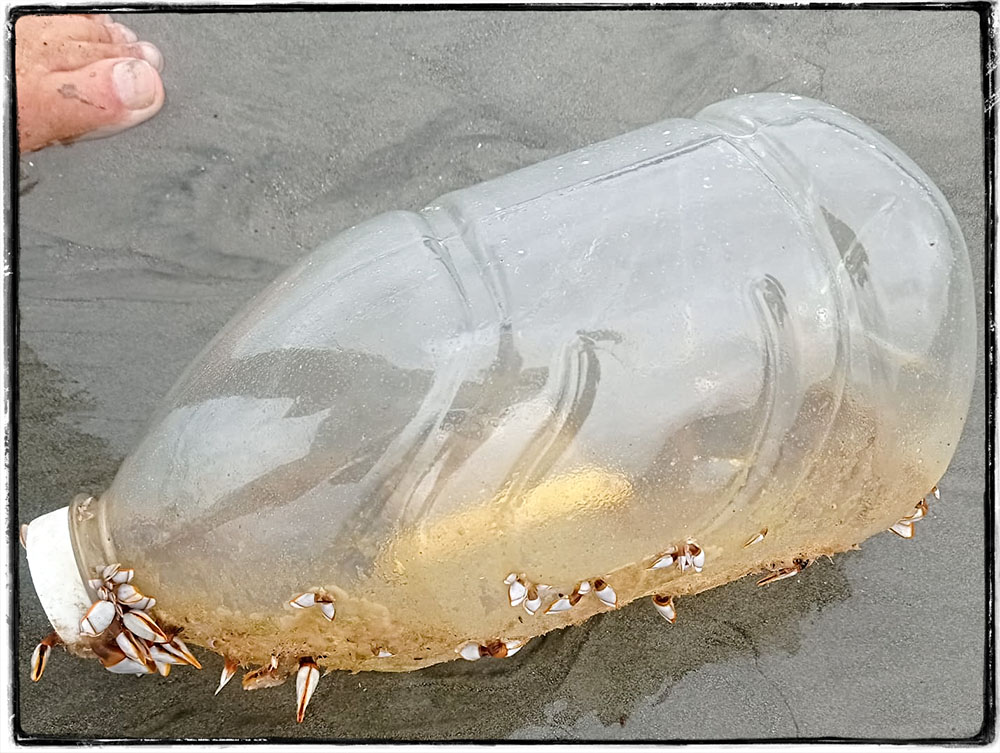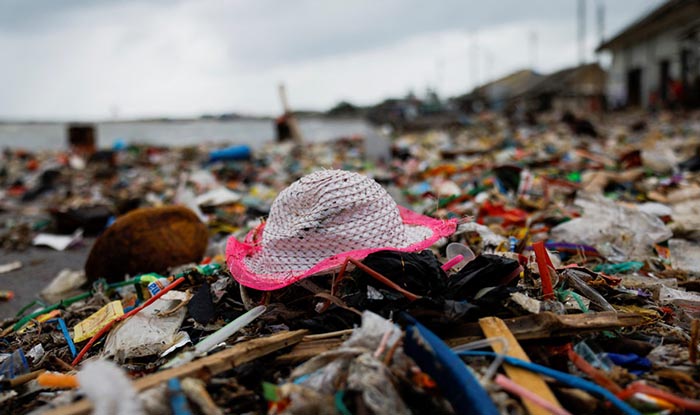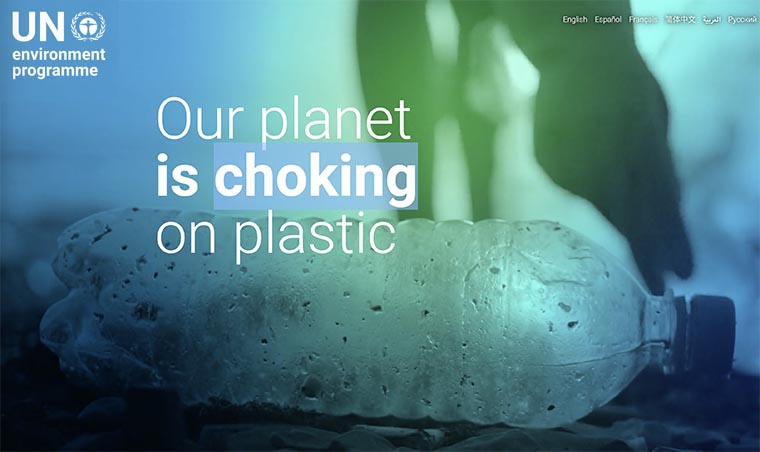[Press PLAY and you can listen to a reading of this article.]
Nature
And Us
I guess the mussels do not really care
where they anchor
I guess nature does not know the name
of plastic
at all
And yet, I guess she should!
I came across that plastic bottle on the beach.
And this poem dropped into my mind.
I snapped a photo, cause it made a big impression on me, this whole thing.
That night i could not fall asleep, so i thought, i better reflect on it a bit.
What is Nature, actually?
I ask myself if we humans are a part of it or is it a relationship that has somehow grown apart?
Nature, in its broadest sense, refers to the entirety of the physical world and the phenomena occurring within it. It encompasses the living and non-living elements of the Earth and beyond, including plants, animals, landscapes, weather systems, geological structures, and cosmic bodies.
Nature operates through complex, interconnected processes and systems that sustain life and maintain the balance of the environment.
At its core, nature can be understood as the self-organizing, dynamic principle that governs existence outside of human-made constructs.
It includes:
The Biosphere: All ecosystems and living organisms, from microorganisms to the largest mammals, interacting with each other and their environments.
The Geosphere: Earth’s physical features such as mountains, rivers, deserts, and oceans, shaped by geological forces over time.
The Atmosphere: The layers of gases surrounding the Earth, which regulate climate and weather patterns.
The Cosmos: Celestial bodies like stars, planets, and galaxies, nebulas and black holes, illustrating the vastness of nature beyond Earth.
Nature is both creative and destructive, embodying cycles of growth, decay, and renewal. It operates through laws and principles such as gravity, thermodynamics, and evolution, which reveal its intricate design and adaptability.
Philosophically, nature often symbolizes the inherent order and beauty of existence, standing as a source of inspiration and mystery. For many spiritual traditions, it represents the divine presence or cosmic intelligence manifesting in material forms.
From our human perspective, nature serves as the foundation for survival, providing air, water, food, and shelter. It also fulfills psychological and emotional needs, offering serenity, awe, and a sense of connection to something greater.
Ultimately, nature is both a tangible reality and a profound idea or concept that is encompassing the seen and unseen forces that shape the world and our place within it.
~~~
Obviously we humans come from Nature and are also a part of it!
But do we maybe at the same time stand apart by our creations that produce “unnatural” elements and insert them into Nature?
From a broad, inclusive perspective, we humans are undeniably part of nature, because of our Biological Origins.
We are the product of billions of years of evolution, shaped by the same natural processes that govern all life on Earth. Our bodies, behaviors, and even consciousness are deeply rooted in biological and ecological systems.
We are Embedded in the Ecosystems of Nature. Like other species, we depend on natural systems for air, water, food, and shelter. Our survival is intricately linked to the Earth’s biosphere and its balance.
Our Creative Impulses, our ability to create —from tools to computers— can be seen as an extension of nature’s creativity. Just as birds build nests or beavers construct dams, we humans transform our environment in ways that reflect our evolutionary adaptations.
In this view, humanity is not separate from nature but represents one of its most complex and impactful expressions. Our intelligence and creativity are simply unique ways that nature manifests itself.
~~~
On the other hand, we human beings often appear to stand apart from nature due to the unique qualities of our creations and actions.
We create Artificiality: Unlike other species, humans produce “unnatural” materials, such as plastics, chemicals, and nuclear waste, which do not exist in nature and often disrupt natural cycles.
We have a huge Environmental Impact: Our activities—industrialization, deforestation, urbanization—alter ecosystems on a scale unmatched by any other species, often leading to degradation rather than harmony.
We are able of Conscious Intent: Unlike other organisms, humans act with deliberate purpose, often prioritizing technological or economic goals and egotistical impulses over ecological balance. This capacity for abstraction and long-term planning can lead to creations that are fundamentally misaligned with natural systems.
We have created a Culture of Separation and Exploitation: Many human societies have adopted worldviews that emphasize dominion over nature rather than coexistence with it, further deepening the sense of separation.
These factors suggest that humanity has, in some ways, distanced itself from the natural order, creating a domain — the Anthroposphere — that seems distinct from the biosphere.
~~~
The Anthroposphere refers to the part of the environment that is created, modified, or significantly influenced by our human activities. It encompasses all human-made or human-altered systems, structures, and interactions within the Earth’s ecosystem.
The term derives from “anthropos,” the Greek word for “human,” and “sphere,” indicating its spatial and functional domain.
The Anthroposphere includes:
– Built Environment: Infrastructure such as cities, roads, buildings, and industrial facilities.
– Technology and Machinery: Tools, vehicles, electronics, computers and all technologies developed and used by humans.
– Agricultural Systems: Croplands, irrigation systems, and livestock farming.
– Economic Systems: Industries, trade networks, and financial systems.
– Cultural and Social Systems: Societies, governments, and institutions.
– Waste and Pollution: Byproducts of human activity, such as plastics, emissions, and landfills.
The Anthroposphere’s relationship with the other Spheres of Nature.
The Anthroposphere interacts with and affects other spheres of the Earth system:
– Our impact on the Biosphere: Human activities impact ecosystems, biodiversity, and biological cycles.
– Our impact on the Geosphere: Mining, construction, and land-use changes alter Earth’s physical features.
– Our impact on the Atmosphere: Fossil fuel combustion and industrial emissions contribute to climate change.
– Our impact on the Hydrosphere: Dams, water extraction, and pollution affect rivers, lakes, and oceans.
In essence, the Anthroposphere represents humanity’s footprint on the Earth, both in its achievements and its challenges.
~~~~~
~~~
~
From all the artificial inorganic substances the we have literally “flooded” Nature with, plastic stands out for me. Both in terms of the sheer amount that we produce and discard into Nature and also because of the longevity of all those plastic materials.
~
~~~
~~~~~
Can plastic be considered part of Nature?
Plastic, as a material, occupies an ambiguous position when considering its relationship to nature. While it is derived from natural substances, primarily fossil fuels like crude oil and natural gas, its synthesis, characteristics, and persistence create a distinction from what is typically understood as part of nature.
How plastic relates to Nature:
Plastic has its Origins in Nature:
– Plastics are made from polymers, long chains of molecules that occur naturally in substances like cellulose, silk, and rubber. However, modern plastics are largely synthetic, produced through the industrial processing of hydrocarbons derived from natural resources.
– The raw materials (oil and gas) are undeniably part of nature, but their transformation into plastic involves significant human intervention, introducing artificial qualities.
Plastic is Non-Biodegradable:
– Unlike materials that decompose naturally and reintegrate into Earth’s ecosystems, most plastics resist degradation. This durability allows them to persist in the environment for centuries, disrupting natural cycles.
– Over time, plastics fragment into microplastics, which spread throughout ecosystems, impacting wildlife and potentially entering the food chain.
Plastic is obviously integrating into Ecosystems:
– Though not naturally occurring, plastics have inadvertently become part of the modern natural landscape. They are found in oceans, rivers, soil, and even the atmosphere.
– Certain microbes and fungi have evolved to break down plastics, suggesting that nature is beginning to adapt to this human-made material.
While plastic originates from natural resources and has begun to interact with natural systems, it is fundamentally a human-made material. It can be considered part of the broader environment but not inherently part of “nature” as traditionally defined. Its widespread presence and impact challenge the boundary between the natural and the artificial.
Nature and Human.
~~~~~
How does Nature deal with the existence of plastic?
Several bacteria, fungi, and other microorganisms have been identified as capable of breaking down various types of plastics. These organisms typically secrete enzymes that degrade the polymer chains in plastics into smaller molecules, which they then consume as a source of carbon and energy. The effectiveness of these microorganisms often depends on the type of plastic and environmental conditions.
1. – Bacteria
– Ideonella sakaiensis
– Type of plastic: Polyethylene terephthalate (PET), used in water bottles and clothing.
– Mechanism: Produces an enzyme called PETase, which breaks down PET into its monomers, terephthalic acid, and ethylene glycol.
– Found in a recycling plant in Japan in 2016.
– Pseudomonas spp.
– Type of plastic: Polyurethane (PU), found in foams, coatings, and adhesives.
– Mechanism: Produces enzymes that degrade PU, often in harsh environments like landfill sites.
– Unique trait: Can survive in environments with toxic byproducts of PU degradation.
– Ralstonia eutropha
– Type of plastic: Polyhydroxybutyrate (PHB), a biodegradable plastic.
– Mechanism: Can metabolize PHB as part of its natural metabolic process.
– Alcanivorax borkumensis
– Type of plastic: Polyethylene (PE), the most common plastic used in bags and bottles.
– Mechanism: Associated with biodegradation of hydrocarbons, showing promise in breaking down PE under certain conditions.
2. – Fungi
– Aspergillus spp.
– Type of plastic: Polyethylene (PE), polyurethane (PU), and polystyrene (PS).
– Mechanism: Produces enzymes that can degrade plastics, especially in soil environments.
– Penicillium spp.
– Type of plastic: Polyethylene (PE) and polyurethane (PU).
– Mechanism: Similar to Aspergillus, it secretes enzymes that break down plastic polymers.
– Zalerion maritimum
– Type of plastic: Polyethylene (PE) and polypropylene (PP), used in packaging.
– Mechanism: A marine fungus that degrades plastics in ocean environments.
3. – Marine Microorganisms
– Brevibacillus spp. and Bacillus spp.
– Type of plastic: Polyethylene (PE) and polystyrene (PS).
– Mechanism: Found in marine environments, these bacteria degrade plastics over time.
– Corynebacterium spp.
– Type of plastic: Polyethylene (PE).
– Mechanism: Found in various ecosystems, including marine and terrestrial environments.
How much plastic is actually existing in the world,
as of now?
Here are some estimates – and this makes me actually sweat while i am writing it :
Total plastic production: Since the 1950s, around 8.3 billion metric tons of plastic have been produced.
Plastic in landfills and the environment: 79% of plastic waste ends up in landfills or the natural environment.
Plastic in the ocean: 75 to 199 million tons of plastic is estimated to be in the ocean.
Plastic particles in the ocean: There are over 170 trillion plastic particles floating in the ocean.
Plastic production in 2060: If current trends continue, plastic production is estimated to triple by 2060.
Other facts about plastic:
12 million tons of plastic enter the ocean every year.
9.5 million tons of plastic enter the ocean from land.
1.75 tons of plastic enter the ocean directly from fishing and shipping.
The number of plastic particles in the ocean doubles every six years.
Plastic production contributes to climate change.
Up to 50% of all plastics produced each year are single-use products.
Less than 10% of the plastic waste generated globally has been recycled.
The United Nations projects that plastics production is likely to rise from about 440 million tons a year to more than 1,200 million tons, saying
“Our planet is choking on plastic.”
~~~~~
~~~
~
If Nature would be a human being, i guess she would be pretty angry on us, our ignorance, exploitation, our destructive-ness.
But Nature, she seems to be endlessly patient, enduring, surrendered, adaptive. Like a mother with her baby.
Since ancient times, native peoples have referred to Nature as:
“Mother Nature”.
Nature, in her vast complexity, deals with the existence of humanity as she does with any other species or force: through adaptation, integration, and, at times, resistance.
Unlike human societies, Nature has no intent, no judgment, and no overarching goal. Instead, it operates through its inherent principles — balance, cycles, and interdependence.
The existence of present-day-humanity presents unique challenges and dynamics, yet Nature responds in ways that reflect her resilience and adaptability.
However, the scale of human influence has reached a point where Nature’s ability to maintain balance is strained. The question is no longer how nature will cope with humans, but whether humans will choose to live in harmony with Nature or force her into a state where her responses and reactions become catastrophic for all life — including our own.
I guess its the highest time to learn Mother Nature’s Qualities. And to respect her, honor her, to love her.
That’s what would do.
~~~~~
~~~
~
What else can i say about her?
Maybe a poem.
Shut Your Eyes; Behold Love, Honor, Respect
listen to her call
she’s the womb of life’s realm
we drink of her scents
fragrant with her blooms
she’s forever here to guide us
yet, forever shuns neglect
– she watches you so –
hear her message softly given
feel her turbulence
catch breezes in your hair
sense balance when trodding forth
hug her bountiful trees
let clouds part your way
– she feels your pulse –
talk among her flowers
do not neglect her glorious weeds
marvel at stone structures
explore wondrous caves
stretch your arms heavenward
breathe in her moon, then kiss her smile
goodnight
– she loves you so –




